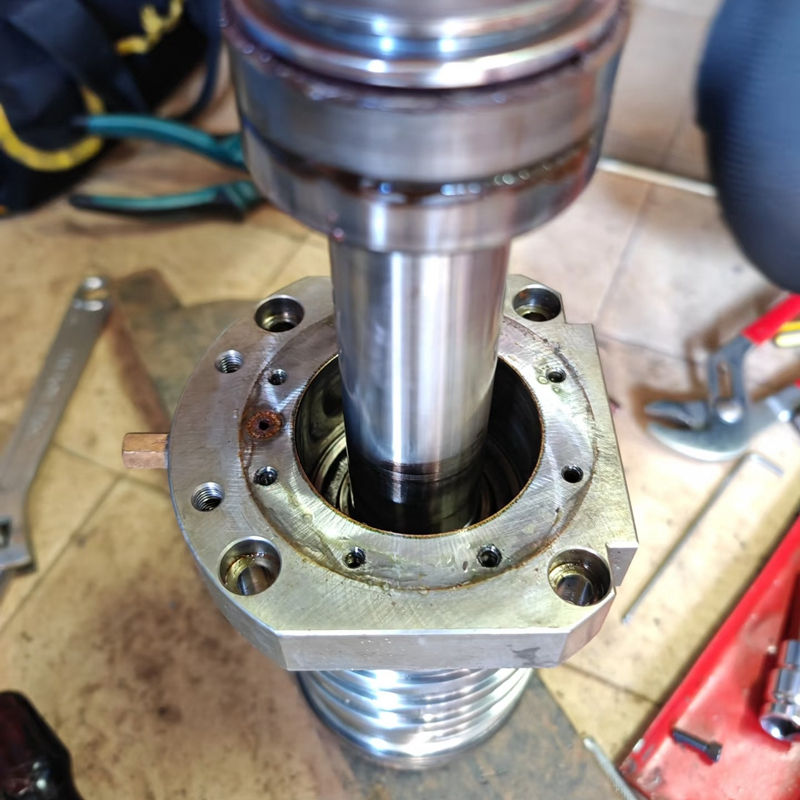How Often Should I Check My Bearings

How Often Should I Check My Bearings Introduction:
How often should I check my bearings? This question may puzzle many engineers and maintenance professionals. Bearings are small parts, but they play a big role. They keep machines running smoothly. Checking them regularly can prevent big problems.
Why Bearing Checks Matter?
Neglecting bearing maintenance can lead to sudden failures. When bearings break down, machines can stop unexpectedly, causing costly downtime and repairs. Regular inspections allow you to catch problems before they become serious. Early detection helps prevent damage to other parts, reduces safety risks, and keeps your equipment running smoothly. Consistent checks also extend the life of your machinery and save money in the long run.
Factors That Influence Inspection Frequency:
How often you check bearings depends on several things:
- The type of machine you have.
- Where the machine works (dusty, wet, or hot places need more checks).
- How hard and fast the machine runs.
- What the manufacturer suggests.
- If you have had bearing problems before.
General Guidelines: How Often to Check Bearings?
How often you should check your bearings depends on how your machine is used and its working environment.
- For heavy-duty or continuously running machines:
Inspect the bearings at least once a week. - For machines in harsh environments:
If your equipment works in dusty, wet, or high-temperature areas, increase inspection frequency to weekly or even daily. These tough conditions can speed up bearing wear. - For standard industrial machines:
Most machines in normal working conditions should have their bearings checked once a month. This routine helps catch early signs of trouble. - For lightly used or well-protected machines:
Equipment that runs occasionally or operates in clean, cool, and dry spaces may only need bearing checks every few months. - After maintenance or part replacement:
Always inspect bearings soon after any major repairs or replacements to ensure everything is working properly.
No matter the situation, it’s important to follow the inspection schedule recommended by your equipment manufacturer.
Signs Your Bearings Need Immediate Attention:
Check your bearings right away if you notice:
- Strange noises.
- Extra vibration.
- The machine feels hot.
- Grease leaks or looks dirty.
- You see rust or damage.
Best Practices for Bearing Inspection:
1. Look for Signs of Wear:
Inspect the bearing surface for cracks, rust, or scratches. Check for any discoloration or pitting.
2. Check Rotation:
Turn the bearing by hand. It should move smoothly without sticking or grinding. Any roughness can mean trouble.
3. Verify Lubrication:
Make sure there is enough clean grease or oil. Old or dirty lubricant should be replaced.
4. Listen and Measure:
Use a stethoscope or vibration meter to listen for unusual sounds. High-pitched noises or heavy vibration often mean problems. Check the temperature with an infrared thermometer. A hot bearing may be failing.
5. Check for Looseness:
Wiggle the bearing gently. It should not be loose in its housing.
6. Inspect Seals:
Look at seals or shields for leaks or damage. Broken seals let dirt in and ruin the bearing.
7. Record Your Findings:
Write down what you see, hear, and measure. Keep a log for each inspection.
8. Follow Manufacturer Guidelines:
Always check the manual for special instructions. Use recommended tools and techniques.
What to Do If You Find a Problem?
If you notice any issues during inspection, take action quickly to prevent further damage.
First, identify the type and severity of the problem. Minor issues, like dirt buildup or old grease, can often be fixed by cleaning the bearing and applying fresh lubricant. If you find signs of wear, such as cracks, rust, or pitting, the bearing may need to be replaced. Check surrounding parts for damage, as bearing failure can affect other components. Always refer to your machine’s manual for specific repair or replacement procedures. After fixing the problem, test the machine to ensure everything runs smoothly. Keep records of the issue and the steps you took for future reference.Prompt action and proper repairs will help avoid costly downtime and keep your equipment in good condition.

